Haguenau's history began with a moated castle built here by the Staufer Frederick the One-Eyed at the beginning of the 12th century. His successor, Emperor Frederick Barbarossa, held Haguenau in high esteem, chose the castle as the repository for the imperial regalia and elevated Haguenau to the status of a town. The town was badly damaged in the Thirty Years' War and razed to the ground in the 17th century on the orders of Louis XIV. Of the town's fortifications, only 3 of the former 40 towers remain, namely the Fishermen's Tower, the Knights' Tower and the Weissenburg Gate. The oldest bells in France can be found in the Romanesque Church of St George (Saint-Georges). The former chancery (to the town hall) with its astronomical clock now houses the Musée Alsacien.
Haguenau is located in one of the largest closed forest areas, the Haguenau Forest.
The Way of St James took us into the town at the Weissenburg Gate. There, to Gerhard's delight, is a statue of Nepomuk. We visited St Nicholas' Church and walked across the town to
St George's Church, from where we followed the Way of St James towards Marienthal.
A description and pictures of the Georgenkirche (St. George's church) can be found here:
Here are some photo impressions of Haguenau:
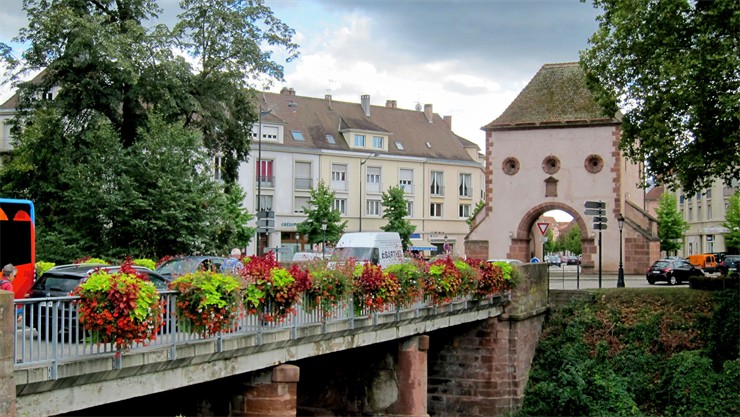

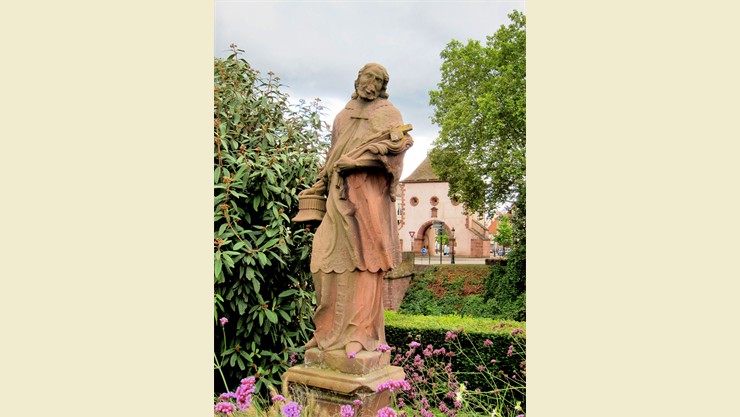 at the Wissemburg Gate
at the Wissemburg Gate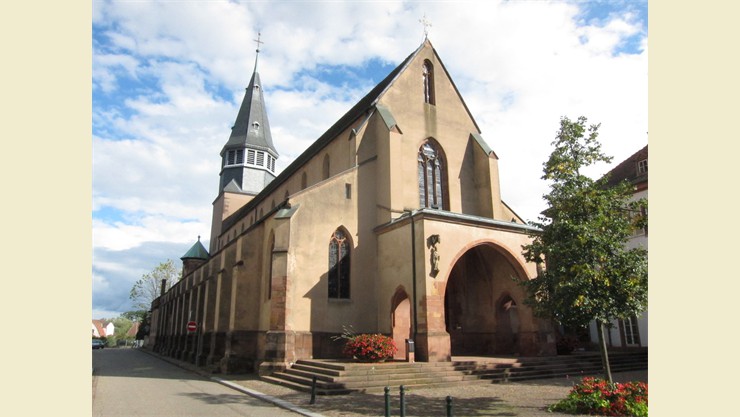

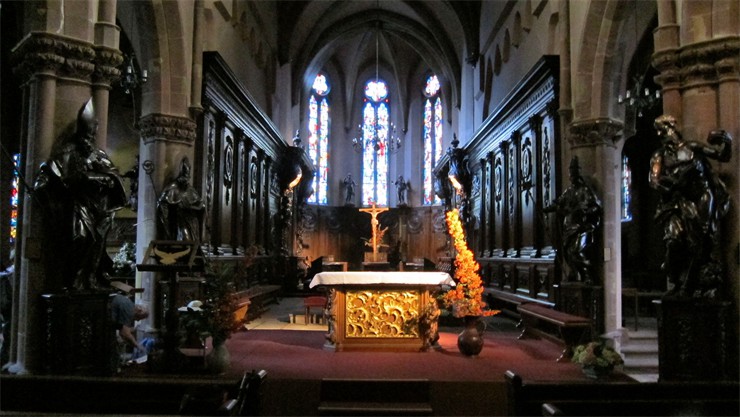



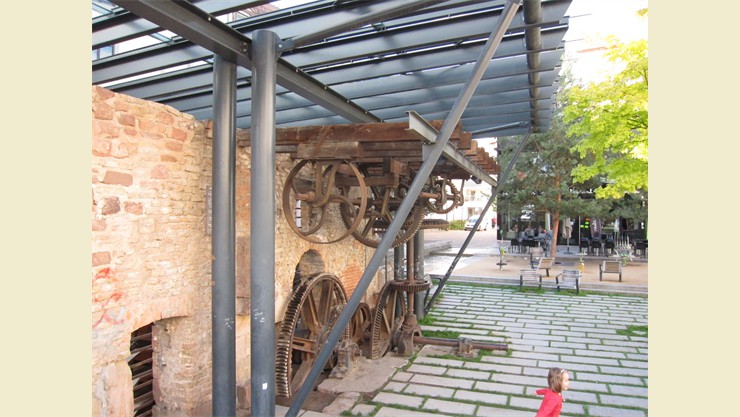
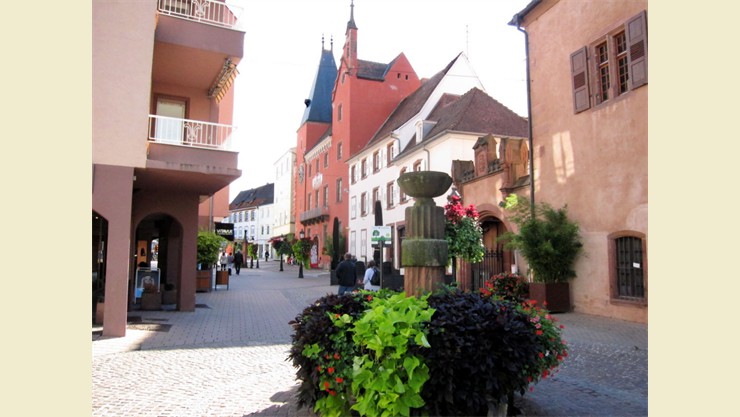
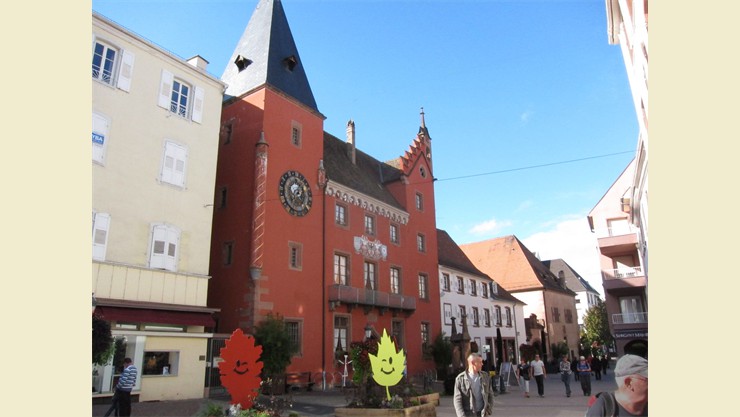 Das Gebäude stammt aus dem 15. Jh.
Das Gebäude stammt aus dem 15. Jh.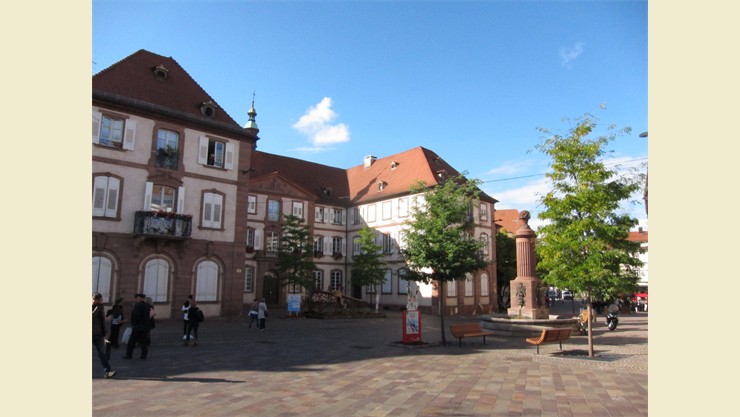
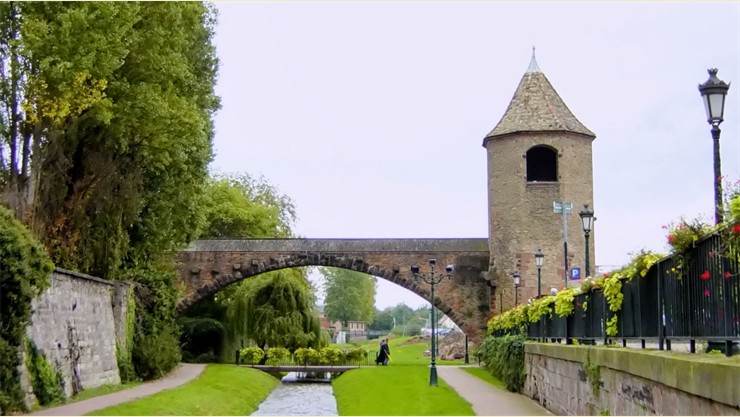 Remainder of the city fortification
Remainder of the city fortification On the way out of town we passed this neo-Renaissance building.
On the way out of town we passed this neo-Renaissance building.
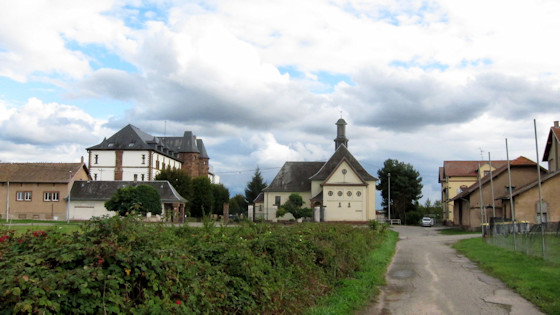
The further way to Marienthal leads through suburbs and is not very interesting. Here we pass the Collège des Missions Africaines.

